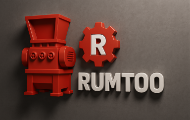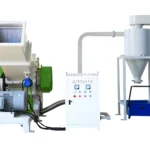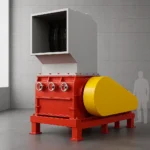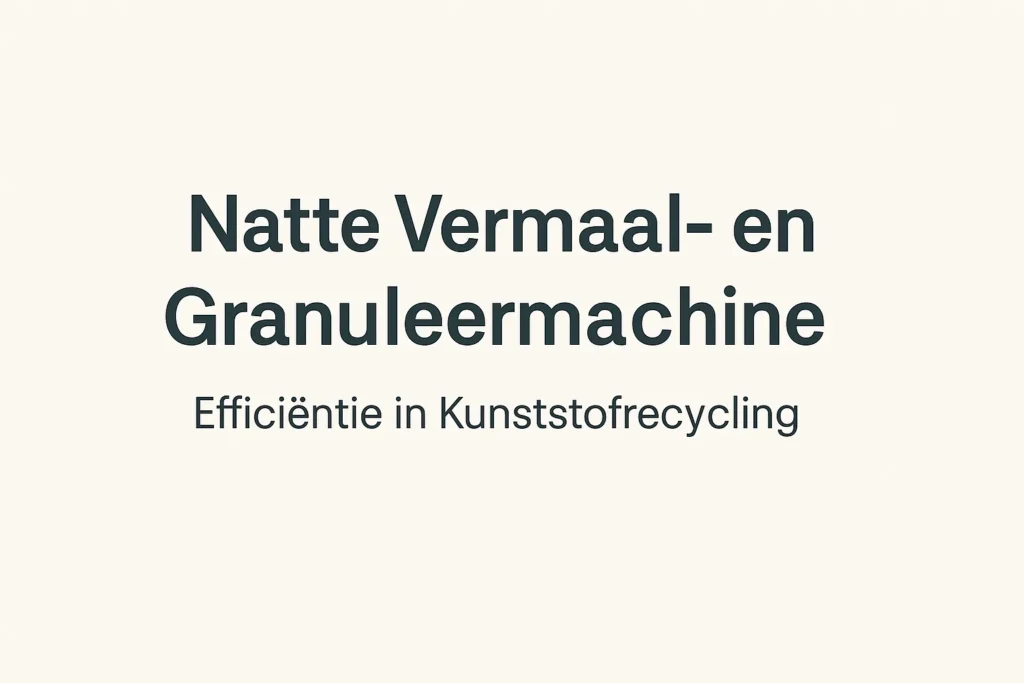A wet grinding and granulating machine is essential for professional recyclers aiming for high-quality end products from contaminated plastic streams. Unlike standard dry grinding, this technology integrates an intensive washing process directly into the cutting chamber. This not only results in efficient size reduction but also produces cleaner 'flakes' ready for further processing right away. For companies in the recycling industry, this means a shorter processing line, lower operational costs, and an end product with a higher market value. At Rumtoo Machine, we are witnessing an increasing demand for these machines due to the stricter requirements for recycled material (recycled material). This article provides a technical analysis of wet granulation, the critical differences from dry methods, and practical guidelines for selecting the right machine for your production line.
What is a Wet Grinding and Granulating Machine Exactly? At its core, a wet grinding and granulating machine (also known as a wet granulator or washing granulator) is a heavy-duty industrial reducer designed to process large quantities of water during the cutting process. It is specifically developed for the plastic recycling sector to process contaminated post-consumer or post-industrial plastics. The machine reduces materials such as PET bottles, agricultural films, or hard plastic crates into uniform granules (typically 10mm to 16mm). The unique aspect is the simultaneous introduction of water into the cutting chamber. This water serves three critical functions that are absent in dry grinding:.
Dit artikel biedt een technische analyse van natte granulatie, de cruciale verschillen met droge methoden, en praktische richtlijnen voor het selecteren van de juiste machine voor uw productielijn.
Wat is een Natte Vermaal- en Granuleermachine precies?
In de kern is een natte vermaal- en granuleermachine (ook wel natte granulator of wasgranulator genoemd) een zware industriële verkleiner die is ontworpen om grote hoeveelheden water te verwerken tijdens het snijproces. Het is specifiek ontwikkeld voor de kunststofrecyclingsector om vervuilde post-consumer of post-industriële kunststoffen te verwerken.
De machine verkleint materialen zoals PET-flessen, landbouwfolies of harde kunststof kratten tot uniforme korrels (meestal 10mm tot 16mm). Het unieke aspect is de gelijktijdige toevoer van water in de snijkamer. Dit water vervult drie kritieke functies die bij droge vermaling ontbreken:
- Friction Cleaning: The high speed of the rotor generates intense turbulence and friction between the plastic and water. This effectively loosens labels, adhesive residues, sand, organic waste, and residual fluids from the plastic.
- Thermal Control: The mechanical cutting of plastic generates significant frictional heat. Without cooling, plastics with a low melting point (such as LDPE or PET) can soften or melt, leading to clogging and blocking of the machine. Water absorbs this heat directly.
- Lubrication and Transport: Water acts as a lubricant between the blades and the material, reducing wear. Additionally, it helps to quickly transport the reduced material through the sieve bed, increasing the throughput capacity.
⚠️ Differentiation from Other Sectors
Note: The term “wet granulation” is also used in the pharmaceutical and chemical industries. There, it refers to the combining of powders with a liquid to form larger granules. In plastic recycling, which we focus on, it means Reduce (Cut) with the addition of water for cleaning and cooling.
Wet vs. Dry Granulation: A Critical Comparison
The choice between wet and dry granulation depends entirely on your input material and the desired quality of the final product. A dry machine is often sufficient for clean production waste. For contaminated material, wet grinding is superior.
| Feature | Wet Granulating Machine | Conventional Dry Granulator |
|---|---|---|
| Main Function | Reduce and intensively wash | Only reduce |
| Suitable Input Material | Contaminated (bottles, agricultural film, post-consumer) | Clean (production waste, reject) |
| Heat Development | Low (active water cooling prevents melting) | High (risk of melting with sensitive plastics) |
| Dust and Fine Dust | Virtually zero (bound by water) | High (requires extensive extraction) |
| Service Life of Meters | Longer (less heat, water lubricates, dirt washes away) | Shorter (higher friction and temperature) |
| Quality of Final Product (Flakes) | Pre-washed, cleaner, ready for friction washing immediately | Dusty, still contains all original contamination |
The 4 Decisive Advantages for Recyclers
Implementing a wet grinding and pelletizing machine in your washing line offers concrete operational and financial benefits. According to industry organizations such as Plastics Recyclers Europe, the purity of the material is the most important factor for high-quality recycling.
1. Superior Quality of Pellets
The “pre-washing effect” in the cutting chamber removes a large part of the abrasive contamination (such as sand and glass) in the first step. This protects downstream machines (such as friction washers and floatation zinc tanks) and ensures a much cleaner end product. Cleaner flakes mean a higher selling price per ton.
2. Increased Process Stability and Capacity
Heat is the enemy of efficient pelletizing. When plastic is heated, it expands and cuts less effectively. In severe cases, it can melt on the rotor blades. The constant water flow keeps the cutting chamber cool, allowing the machine to run at maximum capacity continuously without thermal interruptions. The water washes the pellets of the correct size directly through the sieve, preventing “over-grinding” (the creation of unusable dust).
3. Significantly Longer Life of Wear Parts
Measuring and screening are significant cost items in maintenance. When dry grinding contaminated plastic, sand and gravel act as sandpaper on your blades. In a wet granulator, water acts as a buffer and quickly washes away abrasive particles. Combined with the lower working temperature, blades made of high-quality tool steel (such as D2) retain their sharpness for a significantly longer period. This reduces downtime for blade replacement or sharpening.
4. A Safer and Cleaner Working Environment
Grinding plastics, especially old films or hard plastics, typically generates enormous amounts of dust and microplastics that are harmful to workers and can pose explosion hazards. A wet granulating machine binds this dust directly into the water. This eliminates the need for expensive and complex exhaust air installations around the granulator and ensures a working environment that meets stringent health and safety standards.
Primary Applications and Materials
Wet granulating machines are the standard choice in washing lines for various material streams:
- PET Bottle Recycling: Essential for removing paper/PP labels and adhesive residues from PET flakes. The friction in the water loosens the labels.
- LDPE/LLDPE Films (Agricultural and Post-Consumer): These films often contain a lot of sand, soil, and organic material. Wet grinding is the only way to effectively reduce these materials without the machine stalling due to heat or excessive wear from sand.
- Hard Plastics (HDPE/PP): Think of crates, buckets, pipes, and pallets that have been outdoors. Water helps to remove surface dirt during the breaking process.
- Battery Enclosures and WEEE Plastics: For safely reducing plastics that may still contain traces of acids or other chemicals; water dilutes and washes away these residues.
Guide for Professionals: Choosing the Right Machine
When selecting a wet grinding and pelletizing machine for your line, you must look beyond just the price. Pay attention to the following technical aspects to ensure reliable operation.
Rotor Configuration and Material Type
The type of rotor must match your material. An open rotor with斜置的messen (saw blade) is ideal for films and bottles, as it requires less energy and provides a clean cut. For heavy blocks or thick-walled crates, a heavier, closed rotor is needed. Ensure that the blades are made from high-quality steel such as D2 or comparable alloys that are resistant to both impact and corrosion caused by water.
Waterproof Enclosure and Bearings
This is the critical difference from a converted dry granulator. A true wet granulator has a fully enclosed cutting chamber to prevent leaks. Even more importantly: the bearings must be made of materials that are resistant to corrosion and wear, ensuring long-lasting performance. Outboard Bearings The cutting chamber is equipped with outboard bearings and features high-quality seals. This prevents water and fine dust from penetrating the bearings, which is the most common cause of premature machine failures.
Maintenance Accessibility
Despite the extended lifespan, knives need to be replaced and screens cleaned. Choose a machine with a hydraulically operated hopper and screen holder. This reduces maintenance downtime from hours to minutes. Quick access is also crucial in case of an accidental foreign object (such as metal) entering the machine.
Rumtoo RTM-W Series: Robust Wet Granulators
Our RTM-W series is specifically designed for the harsh conditions of 24/7 recycling operations. With external bearing housing, D2 steel knives, and heavy-duty waterproof enclosures, we offer reliability for processing PET, films, and hard plastics.
View Full Specifications and Find the Model That Fits Your Capacity Needs.
View Details & ModelsConclusion: A Necessary Step for Circular Quality
The shift towards a circular economy requires that recycled plastic (scrap) comes ever closer in properties to new material. A wet grinding and pelletizing machine is no longer an option, but a fundamental requirement for any recycler processing contaminated streams.
By combining reduction and cleaning intelligently in one process step, you increase the efficiency of your line, reduce maintenance costs, and deliver a cleaner product ready for the next step in the recycling process. Investing in the right wet pelletizing technology is investing in the sustainability of your recycling business.


 Granulator for Recycling WPC Material (Wood-Plastic Composite)
Granulator for Recycling WPC Material (Wood-Plastic Composite) Granulators for Hard Plastics
Granulators for Hard Plastics